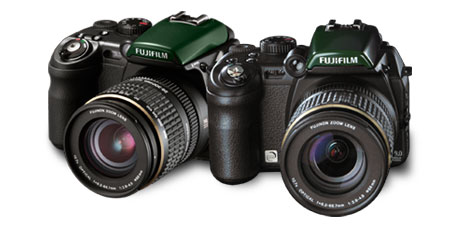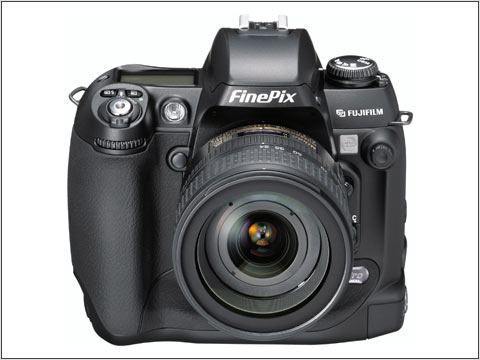Fujifilm has announced its latest IS-1 digital camera yesterday via Business Wire, New York. This latest digital camera was designed for capturing images in the infrared light spectrum. It was developed for use in the law enforcement, medical/dental and science fields and is a follow-up model to the FinePix S3 Pro UVIR D-SLR.

IS-1 – FUJIFILM’s Newest Infrared Digital Camera
FinePix S3 Pro UVIR was introduced in August 2006 and it was the world’s first production D-SLR camera capable of taking photographs in the ultraviolet and infrared light spectrums. What does it mean and how does a digital camera that can take pictures at either end of the light spectrum? The human eye is a remarkable imaging device to be sure, but it can’t see everything. Its sensitivity range is limited to wavelengths that normally start at 400 nanometers (violet) at the short end of the visible spectrum and extend to 700 nanometers (deep red) at the long end. This is also the realm of standard digital and film photography where, with certain exceptions, what you see is what you get. But there are times when ordinary visible-light pictures do not reveal everything a criminal investigator, scientist, or medical researcher needs to see. This is where ultraviolet and infrared imaging comes into play.
Scientists define wavelengths shorter than 400 nanometers as ultraviolet (UV), and wavelengths longer than 700 nanometers as infrared (IR). Technically, neither UV nor IR is “light” because humans can’t see it. However, photographs taken at UV and IR wavelengths can capture and reveal information that is otherwise undetectable by the human eye – literally “colors” we can’t see but that cameras, sensitive to IR and UV wavelengths, are able to record and make visible. It is the visual equivalent of the dog whistle we humans cannot hear. This uncanny ability to reveal the unseen is why technical professionals in fields ranging from law enforcement, to military surveillance, to medical research, to art history, to biology have long used UV and IR photography to discover crucial observational facts that would ordinarily elude the keenest human eye.
Like the FinePix S3 Pro UVIR, the IS-1 will help law enforcement officers solve crimes by capturing evidence not easily seen by the human eye. It can be used in both the visible and infrared light spectrums, making the evidence-gathering process more efficient and accurate. It helps to uncover things evidence not easily seen by the human eye such as gun shot residue and blood stains, as well as to recover altered, burned or obliterated writing.
The FinePix S3 Pro UVIR was the first D-SLR to feature a live CCD previewing feature. This feature is further developed in IS-1. With this enhance ability, it is an advantage of IS-1 during infrared photography for focusing and composing when using dark lens filters. It also has an articulating LCD, which simplifies the processes of previewing, capturing and reviewing photos – especially when the camera is in a laboratory environment. Its 10.7x, 28-300mm optical zoom system is built-in, minimizing dust, making operation a snap for forensic photographers. Through the use of an infrared cut or “hot mirror” filter on the lens, the IS-1 can capture a visible light image very close in quality to that of a standard digital camera, adding flexibility and cost-effectiveness to the overall package.
FinePix S3 Pro UVIR is a well respected camera due to the photographic technologies that it carries. It has been well-received in the forensic and scientific markets. With the update version, Fujifilm is confident that this new digital camera will have better reception.
IS-1 is priced at $899 and it will be available at select authorized dealers in the United States in February 2007. Don’t miss the opportunity to explore this good assistant!
Find out more about Fujifilm’s announcement. Click here. For a dealer list, interested parties should visit Fujifilm website.

FINEPIX S3 PRO UVIR